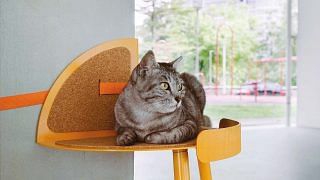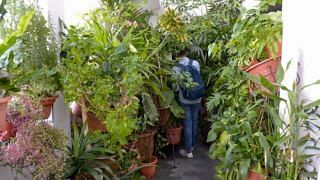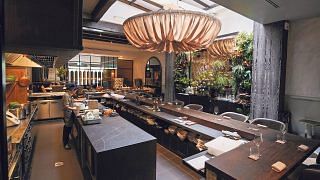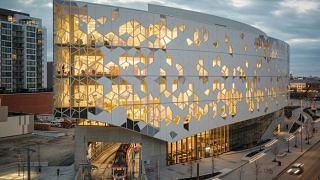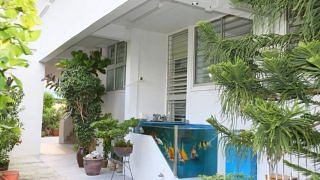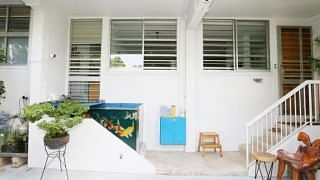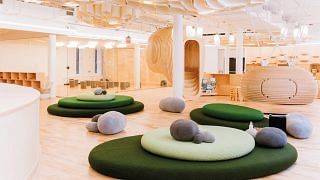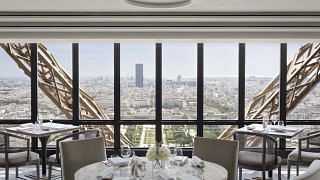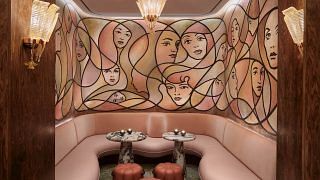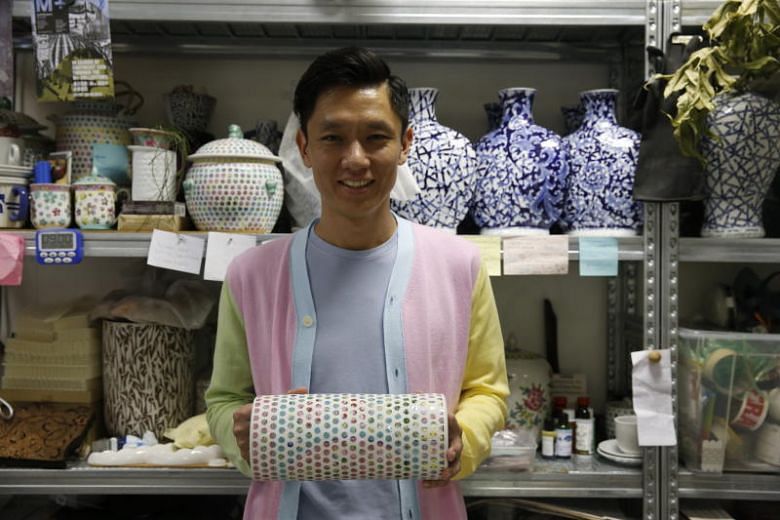 Hans Tan is known for works such as his Spotted Nyonya collection of vessels which re-interpret local themes.ST PHOTO: TIMOTHY DAVID
Hans Tan is known for works such as his Spotted Nyonya collection of vessels which re-interpret local themes.ST PHOTO: TIMOTHY DAVID
He may have won a President's Design Award (PDA) three times, but Hans Tan, 38, will be the first to admit that he can't draw.
In fact, his drawing skills were so weak that he left the drawing section of his admissions test to design school at the National University of Singapore (NUS) blank, fortunately getting in anyway.
Tan's own mother, who ran kindergartens, had her reservations about his decision to study industrial design, but said nothing until he graduated.
"She told me she knew I was always bad at art and drawing, that I couldn't draw, I did badly in art class, I always drew the same thing… She was very worried," Tan says.
"If she had told me at the start, it might have affected my confidence. Instead, I was allowed to find my way. For me, that's the hallmark of a good parent."
Tan had initially accepted an offer to study business – accounting was one of his strongest suits at Raffles Junior College and Tan's father was an accountant.
But he changed his mind after spotting a design school flyer that slipped out of the NUS prospectus.
"I just took the dive, I don't know why. I applied for the course without really knowing what it's about," says Tan.
No surprise then that those who knew him growing up never predicted Tan would today be a winner of the most prestigious accolade for design in Singapore.
Tan is known for works such as his Spotted Nyonya collection of vessels which re-interpret local themes.
In Spotted Nyonya, he juxtaposes colourful polka dots with the Peranakan motifs they form when viewed as a whole. This collection won the PDA Design of the Year award in 2012.
In 2015, he won the award again for the Pour table, a side table with puddle-like circles of resin in yellow, turqoise, pink, sky blue and light green.
Last month (July), he bagged the PDA's Designer of the Year award.
Tan says his lack of drawing talent means he has had to find a different way to approach design.
"Because of my weakness in drawing, I've always tried to find a medium where I can communicate with myself iteratively – and writing is one of the best mediums for it," says the 38-year-old.
"Whenever I am working on a design project, I always read… and when I read, ideas will emerge," says Tan, who dives into titles by authors such as Gaston Bachelard and Italo Calvino for inspiration.
After graduating from NUS, Hans Tan began a two-year master's degree at Design Academy Eindhoven in The Netherlands on a DesignSingapore postgraduate overseas scholarship.
One of the things that struck him about Eindhoven was the emphasis they placed on believing in your own point of view.
There was also no divide between art and design, Tan says.
"In The Netherlands, design is exhibited in an art museum as if it's art… Designers and artists were really thriving in this melting pot of cultures because they knew each other, they were working together, exchanging ideas.
"(In Singapore), our art museums almost never exhibit design. I only realised the divide was so real when I came back."
After graduating cum laude, Tan returned to Singapore and set up Hans Tan Studio in 2007. It took two years for it to become profitable.
"A lot of designers in Singapore don't see the role of art, and why art is so important. So when I came back and I was operating in between (art and design), it was very hard to place myself."
Even in those early days where he was operating a studio out of his bedroom in his parent's house, Tan would turn down paid work if it didn't give him the creative freedom he wanted.
"Saying 'no' allowed me to streamline my objectives and my practice."
He also took on part-time teaching jobs at NUS and Singapore Polytechnic in 2008 .
"Teaching is the best way to learn. When you work with 20 students, you work on 20 projects, and you have to be better than all of them," says Tan who is now an assistant professor at the university's division of industrial design.
"I would come home with a headache, but it was very fulfilling – I was forced to become better."
Tan is married to an administrative officer-turned-housewife.
They have two sons – Chesed, six, and Chairo, three. Hans, who calls himself an "extreme introvert", met her at a club.
"No one believes me when I tell them that."
Tan might come across as quiet but he has no shortage of bold ideas – he once thought of breaking a toilet bowl by dropping it from a height of three to four storeys, although he ended up usinga drill instead.
In his third year of university, Tan took part in the Singapore Furniture Industries Council's Furniture Design Award. He entered via the young designers rather than students category – and won. "If you take part in an award, you might as well win the top prize."
Since then, he has won a number of other accolades including being named one of Korean magazine Designnet's 36 Young Asian Designers in 2009, and winning an award for best innovative product at the fall edition of Maison et Objet 2012 in Paris.
Today, his works – known for their quirky re-interpretations of Asian themes – are held in private collections, as well as public permanent collections at the National Collection of Singapore, M+ Museum for Visual Culture in Hong Kong, the Cooper Hewitt Smithsonian Design Museum in New York, and the Princessehof National Museum of Ceramics, in Leeuwarden, The Netherlands.
One of his works is Singapore Blue, a white vase with a blue marker pen attached to it that invites the user to scribble their own patterns on the porcelain surface.
The Spotted Nyonya collection, however has been his most popular so far.
"Everyone thinks I'm Peranakan because of Spotted Nyonya," says Tan. "They are disappointed when they find out I'm not. To some extent, it's 'defacement', what I do… I was once told that I shouldn't be doing these things."
Last year (2017), he created an interactive piece inspired by the fortune cats at the entrances of Asian stores. No Such Luck, which has a swinging arm and a transparent body exposing its electromagnetic pendulum mechanism, was exhibited at the ArtScience Museum.
"When there is no one around, it (the arm) will swing quite violently. It attracts people, but when they go up to it, it slows down," says Tan, with a nod to the work's ultrasonic distance sensor. "People are shocked, because normally an interactive artwork only starts when you go up to it."
Atelier Hoko research lab's co-founder Alvin Ho, 35, one of three Singaporean designers Tan shared a house with in Eindhoven – the other two were David Tham, founder of StudioNorm Design Consultants, and Hunn Wai of design studio Lanzavecchia + Wai – remarks that Tan has "a calculated kind of quietness… to let you talk, to let things happen".
"Sometimes you want him to give you the answer, but he won't," says former student Jon Chan, 25. "He'll slowly drop hints, week after week."
Chan, who also did an internship at Hans Tan Studio, adds that in Singapore "it's quite convenient to learn the business aspect of design… (For Hans), it is not so much about commercial viability as thinking about the world around us. It sounds very lofty, but he proposes a very interesting viewpoint."
Tan, who believes that "creativity can be trained", has also won awards for his teaching.
Previous projects with students range from U for Urn, where they explored the role of design in death, to another called K for Kueh where they experimented with ways of making kueh.
"It's a science," says the avid cook, who has a "killer lor bak recipe".
Turning to the state of the design industry in Singapore, Tan, who co-founded multi-disciplinary design studio Stuck in 2010, says: "In Singapore, we always consider design, at least at the top-down level, to be an economic driver, but less as a cultural driver… I was always interested in the relationship between design and culture."
He hopes the island state will one day have a "big, full-fledged design museum" the size of the National Gallery. Design and art museums should also work together to dissolve the divide between them.
While the design industry in Singapore is burgeoning, and good opportunities in corporate firms are easier to come by, Tan worries this will "cannibalise" the talent out there. He contrasts this with the situation a decade ago where he and his peers set up their own studios.
"I hope the new generation of graduates will be bolder and have a more entrepreneurial spirit."
This story was first published in The Straits Times. Click here to read the original story.


